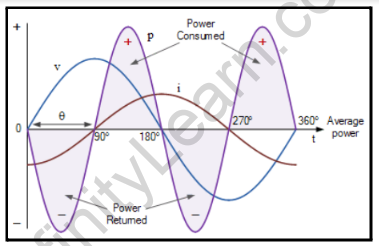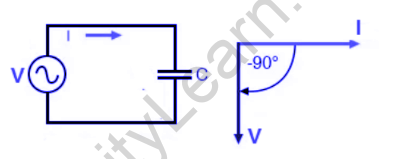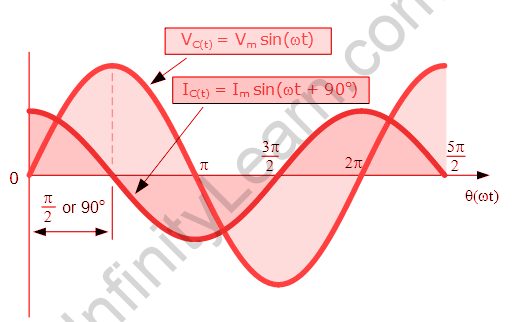Table of Contents
Introduction
The power factor of an alternating current power system is a dimensionless number in the closed interval of 1 to 1. The ratio of real power absorbed by the load to visible power flowing in the circuit is what it’s called. A power factor magnitude less than one indicates that the voltage and current are out of phase, which reduces the average product of the two.
The capacity of electricity to perform work is represented by real power, which is the instantaneous product of voltage and current. The product of RMS current and voltage is apparent power. Because of energy stored in the load and returned to the source, or because of a non-linear load, the waveform of the current pulled from the source is distorted, the apparent power may be greater than the real power. When a device (usually the load) generates power, it is then returned to the source, resulting in a negative power factor.
For the same amount of useful power transferred, a load with a low power factor draws more current than a load with a high power factor in an electric power system. Higher currents cause more energy to be lost in the distribution system and necessitate larger wires and other equipment. Electrical utilities would normally charge a higher rate to industrial or commercial clients with a low power factor because of the costs of larger equipment and lost energy.
Power-factor correction raises a load’s power factor, increasing the efficiency of the distribution system to which it is connected. A passive network of capacitors or inductors can be used to rectify linear loads with low power factors, such as induction motors. The current draw of a system is distorted by non-linear loads like rectifiers. In such cases, active or passive power factor correction can be used to compensate for the distortion and increase the power factor. Power factor correction devices can be located at a central substation, distributed throughout a distribution system, or built into power-consuming equipment.
Overview
It is classified into two types based on the direction of current flowing through the circuit. The first is alternating current, and the second is direct current. Alternating Current occurs when an electric current periodically reverses its direction while flowing through an electric circuit (AC). Direct current, on the other hand, is when current flows in only one direction (DC).
The main advantage of alternating current is that it is simple to convert higher voltage levels to lower voltage levels and vice versa. As a result of this property, high voltage power from power plants can be reduced to a safer voltage for domestic use. Capacitors and inductors only work with alternating current.
The flow of electricity can be turned by using them in Alternating current circuits. This property aids in the tuning of radio stations. AC electricity is preferred for home appliances for these reasons.

Both electromotive force and current change continuously with respect to time in an alternating current circuit. This is the main reason we can’t calculate the power because power is equal to the product of voltage and time. The average power of an alternating current circuit can be calculated by calculating the circuit’s instantaneous power.
In an alternating current circuit, the average power dissipation can be calculated as follows:
Pav=∫0TVIdt/∫0Tdt
When an a.c circuit contains a resistor, the power increases. When an inductor or capacitor is connected in series to a resistor, the power of the a.c circuit decreases. The average power of an alternating current circuit is known as the true power of the electrical circuit and is referred to as a power factor. An alternating current circuit’s power factor is the ratio of true power dissipation to apparent power dissipation.
Power in AC Circuits:
A DC circuit’s power consumption is simply the product of the DC voltage and the DC current, given in watts. However, for alternating current circuits with reactive components, the consumed power must be calculated differently. Because electrical power is the “rate” at which energy is consumed in a circuit, all electrical and electronic components and devices have a limit to the amount of electrical power that they can safely handle. Electrical power can be time-varying either as a direct current (DC) quantity or as an alternating current (AC) quantity.
The amount of power in a circuit at any given time is referred to as instantaneous power, and it is calculated using the well-known equation power equals volts times amps (P = VI). So one watt (the rate at which energy is expended at one joule per second) equals the volt-ampere product of one-volt times one ampere.
The power absorbed or supplied by a circuit element is then equal to the product of the voltage, V across the element, and the current, I flowing through it. So, if we have a DC circuit with a resistance of “R” ohms, the power dissipated by the resistor in watts can be calculated using any of the generalized formulas below:
P=V×I=V²R=I²×R
Because there is no sinusoidal waveform associated with the supply, the voltages and currents in a DC circuit are generally constant, that is, they do not vary with time. In an alternating current circuit, however, the instantaneous values of voltage, current, and thus power are constantly changing and are influenced by the supply. So, while we cannot calculate power in AC circuits in the same way that we can in DC circuits, we can still say that power (p) equals voltage (v) times amperes (i).

So far, we’ve seen that power in a dc circuit is equal to the product of voltage and current, and that this relationship holds true in a purely resistive AC circuit. Resistors are energy-consuming electrical devices, and the power in a resistor is given by
p=VI
=I²R
=V²/R
Power factor of an ac circuit is equal to,
The power consumption of a DC circuit is simply the product of the DC voltage and the DC current, expressed in watts.
Power factor =cosΦ
Where denotes the angle formed by voltage and current.
The power factor will be lagging if the current lags behind the voltage.
The power factor will be leading if the current exceeds the voltage.
Power factor =cosΦ=R/Z
Z=√R²+X²
Where R denotes resistance. Z equals impedance, X equals reactance.
When the circuit is purely resistive, the power factor is one.
Power factor of an ac circuit is equal to the cosine of the angle between voltage and current.
In a pure inductive circuit, the power is,
A pure inductive circuit is one that contains only inductance (L) and no other quantities such as resistance or capacitance. The current in this circuit lags behind the voltage by an angle of 90 degrees. Because the capacitive load always opposes the rate of change of voltage, current leads voltage by 90° in a pure capacitive circuit. The pure capacitive circuit is shown in the diagram below.

The current flowing through the capacitor is 90° ahead of the applied voltage.

In an alternating current circuit, power is provided by;
P=VICosΦ
The purely capacitive circuit has a power factor of zero.
cosΦ=0
In a purely inductive circuit, power is given by,
P=VICos ΦP
=VI×0 P
=0
The power in an alternating current circuit is critical because it determines the amount of current that flows through the circuit and, thus, the size of the wire required. The power factor has an effect on the voltage and current waveforms as well. A low PF indicates that a lot of energy is being wasted as heat as a result of inefficient electricity use. This can result in overheating and electrical equipment failure.
Also read: Important Topic of Physics: Wattless Current
FAQs:
Question 1: How is alternating current created?
Answer 1: Current is produced by various sources of electricity, such as electromechanical generators. Voltages are used to generate current that alternates in polarity, reversing between positive and negative over time. An alternator is frequently used to generate alternating current. When an alternator generates a magnetic field, a loop of wire is rapidly inserted to produce an electric current.
Question 2: What are the uses of an alternating current?
Answer 2: Because the alternating current is relatively easy to generate and transport over long distances, it is commonly used in mains-wired buildings (offices, residential complexes). Less energy is used in power transmission at high voltages. Lower currents are produced at high voltages, resulting in less heat in transmission lines due to their lower resistance. Using transformers, alternating currents can be easily converted from low voltage to high voltage and vice versa.





